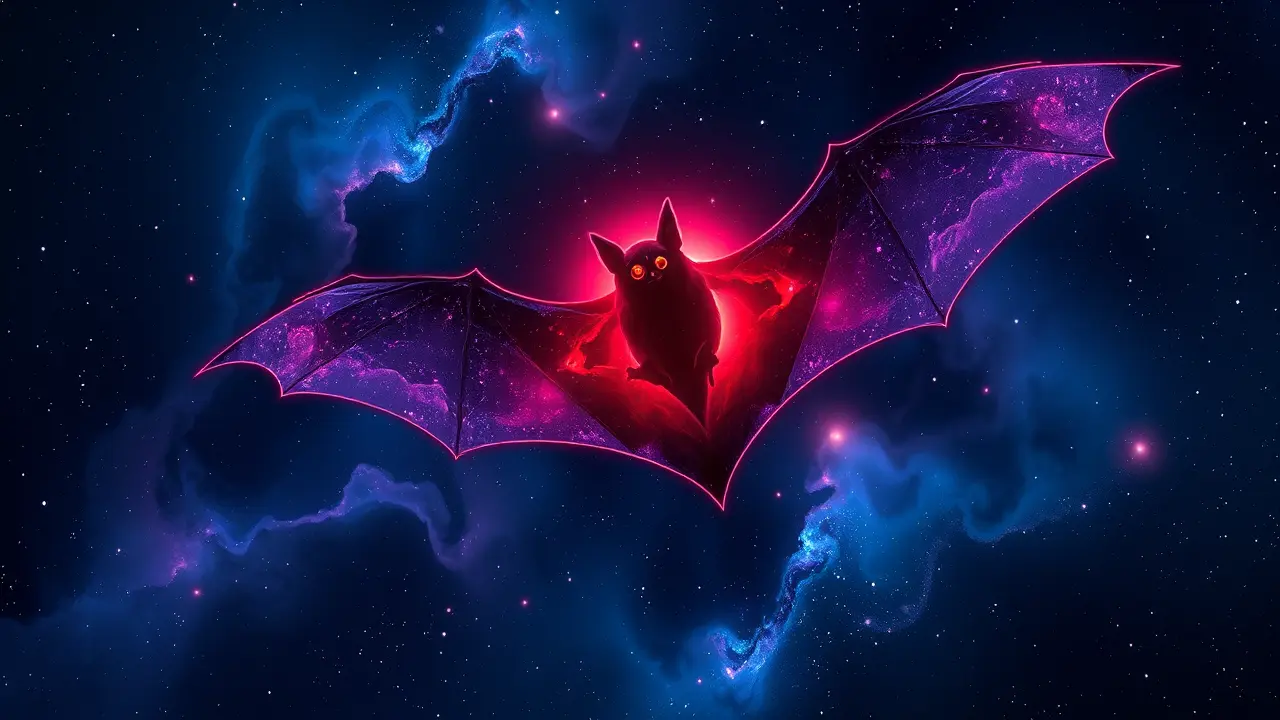
Sciencespace & astronomyAstrophysics Discoveries
Astronomers capture a spooky “cosmic bat” in deep space
TH
Thomas Green
2 days ago7 min read
In the vast, silent theater of our cosmos, a new performer has taken the stage, its form so eerily familiar it seems almost a specter from a celestial dream. Astronomers have trained their formidable eyes on a deep-space nebula, a sprawling cloud of gas and dust located a staggering 10,000 light-years from our pale blue dot, and have captured an image that fires the imagination: a ‘cosmic bat’ spreading its vast, crimson wings against the velvet black of the interstellar void.This isn't merely a pretty picture; it's a violent, beautiful nursery, a crucible of creation where the very forces of physics are sculpting new suns. The nebula’s haunting glow, that signature crimson hue, is the tell-tale sign of hydrogen gas being bombarded by intense ultraviolet radiation from the fledgling stars buried within its dusty folds.These are stellar infants, so young and energetic they are essentially setting their own cradle ablaze, igniting the surrounding clouds in a process that is both destructive and generative, a cycle of death and rebirth that has played out across the universe for billions of years. To understand a structure like this is to take a masterclass in astrophysics, a field that has been utterly revolutionized in the last few decades.We’ve moved from grainy black-and-white plates to the stunning, data-rich color composites produced by instruments like the Hubble Space Telescope and the James Webb Space Telescope, which allow us to peer into these stellar nurseries with unprecedented clarity, dissecting their chemistry and dynamics. The ‘bat’ itself is likely what’s known as an emission nebula, similar in nature to the iconic Orion Nebula, a celestial landmark visible with binoculars from Earth.But its distance makes it a far more challenging and exotic subject, its light having traveled for ten millennia before finally being captured by our sensors—we are seeing it not as it is now, but as it was when human civilization was in its infancy. The shape, while evocative, is a temporary cosmic coincidence, a fleeting alignment of dense dust lanes and glowing gas that will eventually be blown apart by the very stars it birthed, their stellar winds acting as a cosmic broom that clears out the nursery, leaving behind open clusters of stars to drift apart on their own galactic trajectories.This discovery fits into a broader, thrilling narrative of our quest to understand our place in the universe, a quest championed by visionaries like Elon Musk who see such cosmic vistas not as endpoints, but as waypoints on humanity’s journey to becoming a multi-planetary species. If we can learn to read the life cycles of stars in distant nebulae, we better understand the formation of our own solar system, the origins of the heavy elements that make up our bodies, and the potential for habitable worlds around other suns. Every such image is a puzzle piece in the grandest puzzle of all, and this spooky cosmic bat, glowing in the deep, is a reminder that the universe is not only stranger than we imagine, but more actively creative, constantly weaving new tapestries of light and matter in the dark.
#featured
#cosmic bat
#nebula
#star formation
#deep space
#astronomy
#new stars
Stay Informed. Act Smarter.
Get weekly highlights, major headlines, and expert insights — then put your knowledge to work in our live prediction markets.
Related News
Comments
It’s quiet here...Start the conversation by leaving the first comment.
© 2025 Outpoll Service LTD. All rights reserved.
